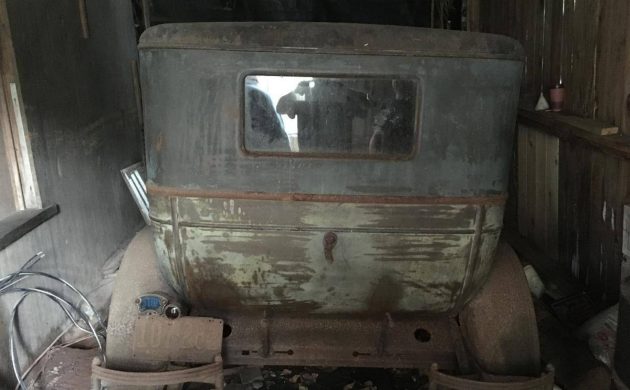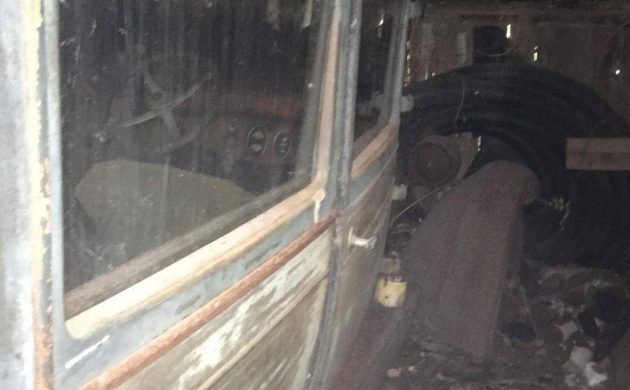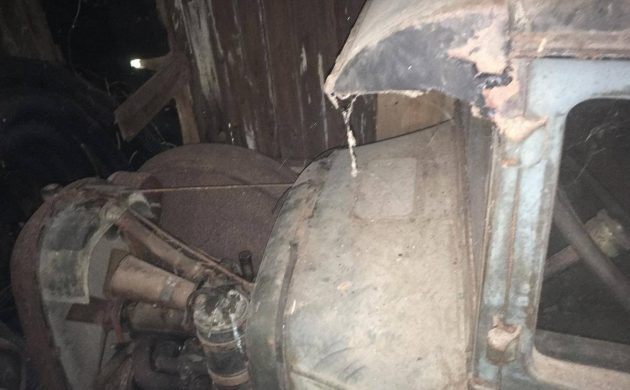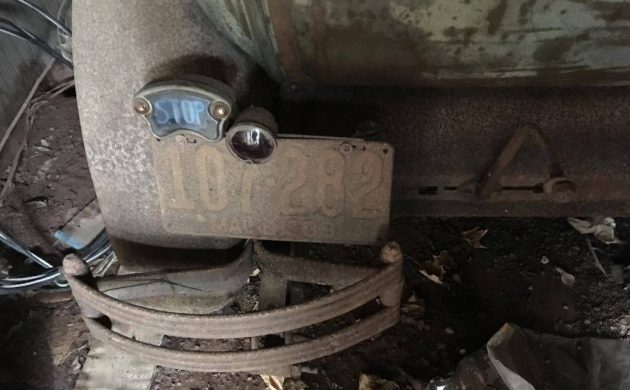Parked in 1965: 1928 Willys Overland Whippet 2-Door Sedan
This 1928 Whippet is one of a group of cars that holds a special place in American automotive history. First introduced as a 1927 model, the car was a sales success, and in 1928 the sale of 315,000 cars allowed the Willys-Overland company to achieve third place in car sales behind Ford and Chevrolet. However, this wasn’t to last, and by 1933, Willys-Overland ceased the production of all passenger car, another victim of the Great Depression. This Whippet has been owned by the same person since the mid-1960s. He purchased the car and drove it straight into his aunt’s barn. That is where it has sat ever since so now he has decided that the time has come to move it on. Located in East Hampton, Connecticut, you will find the Whippet listed for sale here at Hemmings, where the price has been set at $2,400 OBO.
The Whippet has a fair coating of surface corrosion that is visible, but it doesn’t look like there’s much in the way of penetrating rust. The car looks to be complete, and I’d really love to get a look at what the floors and frame are like. All of the windows seem to be present and in good condition, and one of the little features that I like is the brake light on the driver’s side rear of the car that has the word “stop” set to illuminate when the brakes are applied.
We can’t see much of the interior, but what we can see looks fairly encouraging. While we can’t see the actual condition of the seat upholstery, we also can’t see great piles of seat padding poking out anywhere. The dash looks like it is complete, and it also looks like it is in good condition. Another great innovation on the Whippet was an item called the “Finger-Tip Control.” This was located in the center of the steering wheel. It was a multi-function switch, and when you pressed it, the horn sounded. If you rotated the switch to its first setting, the parking lights came on, while the second position operated the headlights. Pulling the switch engaged the starter. The only flaw with the system was that the wiring for it emerged from the bottom of the steering column directly below the carburetor. There was no shielding between the carburetor and the wiring, so dripping fuel had the ability to ignite a spontaneous and totally unplanned barbecue.
Powering the Whippet is a 130ci flathead 4-cylinder engine, producing 30hp. This was sent to the rear wheels via a 3-speed manual transmission, while the car also featured 4-wheel mechanical brakes. The owner uses that wonderful “ran when parked” line when describing the car, but a lot has happened in the intervening years. He has filled the cylinders with Mystery Oil and power steering fluid but has not attempted to turn the engine over at this stage. Given five decades of inactivity, there is bound to be some work to do, even if the engine is brought back to life.
Like so many cars of the era, one of the great attractions of cars like this 1928 Willys Overland Whippet is their simple design and construction. This makes them a prime candidate for a home restoration project. While they were a sales success in the late 1920s, survival rates have been quite low, and they don’t come onto the market terribly often. This one holds a lot of promise, and when properly restored, a good 1928 model can command sales prices of well over $20,000. For a project to take on in a home workshop, this one looks like it could be pretty good.
Auctions Ending Soon
 1971 Ford Mustang Mach 1Bid Now17 hours$7,100
1971 Ford Mustang Mach 1Bid Now17 hours$7,100
 2003 Porsche Boxster SBid Now18 hours$6,250
2003 Porsche Boxster SBid Now18 hours$6,250
 1966 Lincoln ContinentalBid Now20 hours$500
1966 Lincoln ContinentalBid Now20 hours$500
 2000 Jaguar XJ8LBid Now4 days$1,250
2000 Jaguar XJ8LBid Now4 days$1,250
 1977 Datsun 280ZBid Now5 days$275
1977 Datsun 280ZBid Now5 days$275






Comments
I wish there were more pictures of it!! I see this chopped with 9 inch rear fluid breaks and a small block!!! It’s a perfect candidate!!
Please no.
No that would be a shame.
Ugh, yet another lazy seller that couldn’t possibly be bothered to haul it out and get better pictures. Imagine if people had to sell their house this way.
Again we see the devastation of high humidity eastern USA. The rust abounds! The only way to keep them preserved is a heated and dehumidified dry building.
My Dad was born in 1915 his brother Harold in 1913.
Harold bought a ‘28 identical to this one new.
I loved my Dad’s stories of traveling back and forth from The Farm in Southern Illinois to the Gary Indiana steel mill jobs in the Whippit with blankets covering them on winter trips and sharing the Labrador Retriever for extra warmth.. not too many cars back then had much in the heater department.
Dad finally bought a used ‘29 Model A Roadster Deluxe because he got tired of the Whippet stinking every time it was started because of the rat poop on the engine.
For some reason the rats loved the Whippet but shunned the Model A..
You could have had a heater, which was an integral part of the cooling system.
BEWARE! you could not shut it off. It was just as effective as a heater in the summer. All windows down and still ruddy hot. Could have been a commercial baking-oven too.
My Dad had a 1928 Studebaker President with that arrangement. Shut-off valves on the interior only made the car overheat faster.
Whippet is also a smaller size relative of the Greyhound, yet surprisingly fast dog. I doubt that little 4 Bangor sped these along very fast. Yet, it does have a certain amount of appeal to the underdog lover. Somebody save this little Whippet.
God bless America
Technology still used in the MG Midget and Austin Sprite through the 1970s. Spigot on the engine block diverts warm water through a core at the firewall and a fan to blow.
Don’t butcher this car. Restore to original. So tired of people putting a Chevy pushrod V8 in everything. Possibly the most boring engine swap on the planet!
Yes I guess perfection is pretty boring.
I enjoy any Jeep from 1987 down, I have 3 Jeep trucks and 3 Cj’s from 1969 to 1983. I enjoy restoring them back to original stage. I would love to see full photo’s of this vehicle and most likely be interested. But traveling form South Carolina is a long way to travel when the seller could have posted photo’s that showed what he was selling.